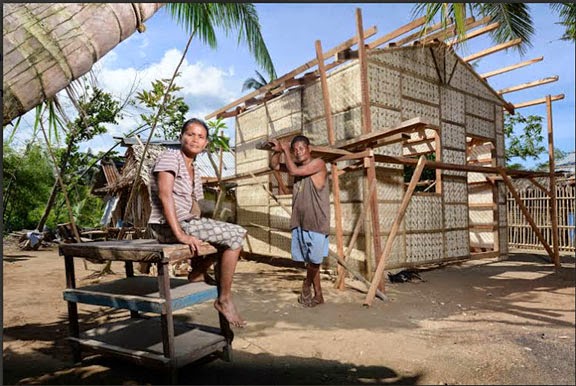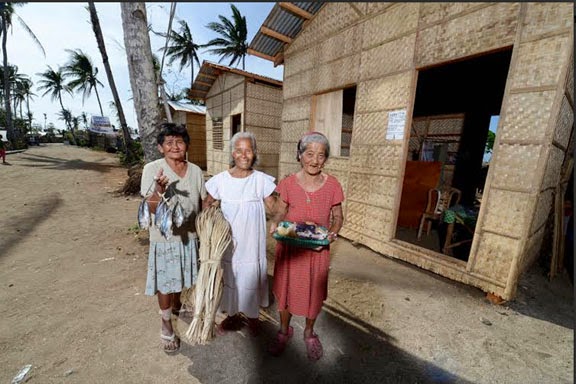
CAPIZ PROVINCE (Mindanao Examiner / July 22, 2014) – The Task Force Mapalad, a peasant organization in the Philippines, said a total of 1,817 disaster-resilient houses were recently turned over to families victimized by typhoon Yolanda (Haiyan) in the four farming towns of Pilar, Panay, Pontevedra, and Dao in Capiz province in western Visayas.
Through a community program dubbed “Pasasalamat: Ululupod (Sama-Sama) Sa Pagbangon” in Barangay Binaobawan in Pilar town in Capiz, Task Force Mapalad said in just five months – from February to July this year – the beneficiaries themselves, who were organized into teams, were able to construct safer homes in 13 villages with assistance and training from the Swiss Interchurch Aid or HEKS (Hilfswerk der Evangelischen Kirchen Schweiz).
It said the beneficiaries of the program are now better prepared to defend themselves from extreme weather events amid the typhoon season.
Melody Nicolas, HEKS-TFM Shelter Project manager, explained that building houses to replace those destroyed by Yolanda was not an easy task as construction did not only mean putting up new shelters or repairing those damaged by the typhoon.
“It is not just about building a house, but building it safer. We had to make sure that the shelters were resilient enough to adapt to climatic conditions and natural hazards in the area as well as to the impacts of climate change,” said Nicolas, in a statement sent to Cebu Examiner.
She said HEKS and TFM made sure that the project would empower Yolanda victims and support local livelihood while the construction of the houses were on-going.
“If we were on our own, it would take us five years to build the houses. Through this project with HEKS and TFM, we are able to trust ourselves and rely on our capabilities to rebuild our own homes,” Joyce Bonita, a resident of Binaobawan village, and one of the beneficiaries of the HEKS-TFM Shelter Project, said in the same statement.
After carefully selecting project beneficiaries through a household survey, HEKS and TFM helped set up the workforce, mostly composed of the beneficiaries themselves, who were organized into teams of two carpenters, four helpers, and the owner-beneficiary of a house, according to Nicolas.
She said the teams, who earned through the project’s cash for work component, underwent training and workshops on how to build disaster-resilient houses based on the Sphere Project standards being adhered to by HEKS and TFM.
The Sphere Project was initiated in 1997 by a group of nongovernmental organizations and the Red Cross and Red Crescent Movement to develop a set of universal minimum standards to improve the quality of humanitarian response in situations of disaster and conflict.
Foremen and shelter supervisors were hired to ensure that the houses in Capiz were properly constructed and complied with design specifications.
“The proper fixing and adding of bracing were significant to ensure the stability and strength of the houses. Even the footings were pre-fabricated to make sure that the houses will be resilient,” Nicolas said.
To support the livelihood in the area, the materials used for building the houses, such as bamboo walls (amatong) and coco lumber that fell down during Yolanda, were locally purchased. Other materials not available in Capiz were sourced from Iloilo City, she said.
She said organizing the beneficiaries into well-trained, motivated, and dedicated teams proved effective. “With 50 to 60 teams working in parallel, the houses emerged like mushrooms. The community spirit and the eagerness of the people to build back their homes notwithstanding the difficulties of coping with the logistical challenges, the workforce, and the weather, spelled great success,” Nicolas said.
The teams in Pilar were able to build 945 houses in the villages of Binaobawan, Dulangan, Rosario, Dayhagan, Sinamongan and Santa Fe. The teams in Panay were able to build 182 houses in Bantigue and Bungcayao villages.
While the teams in Pontevedra were able to construct 84 houses inthe village of Manapao and those from Dao were able to put up 606 shelters in Mahoy, Quinayuya, Matagnop, and Duyoc villages.


